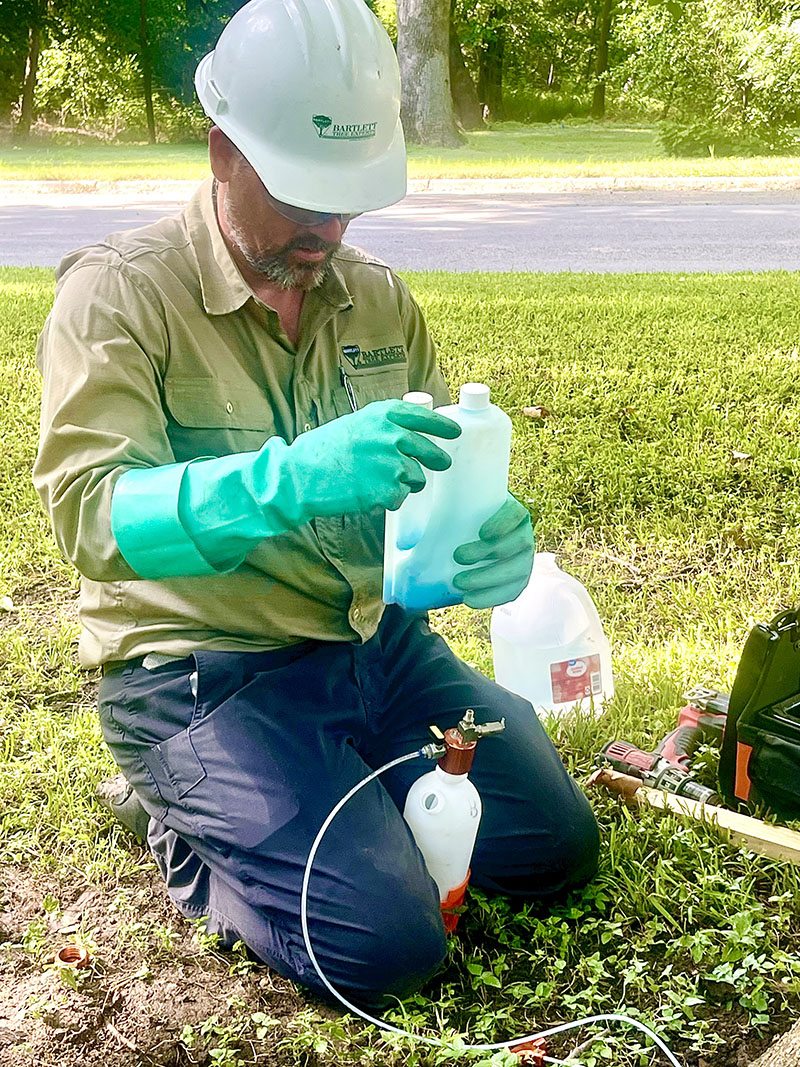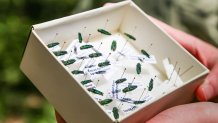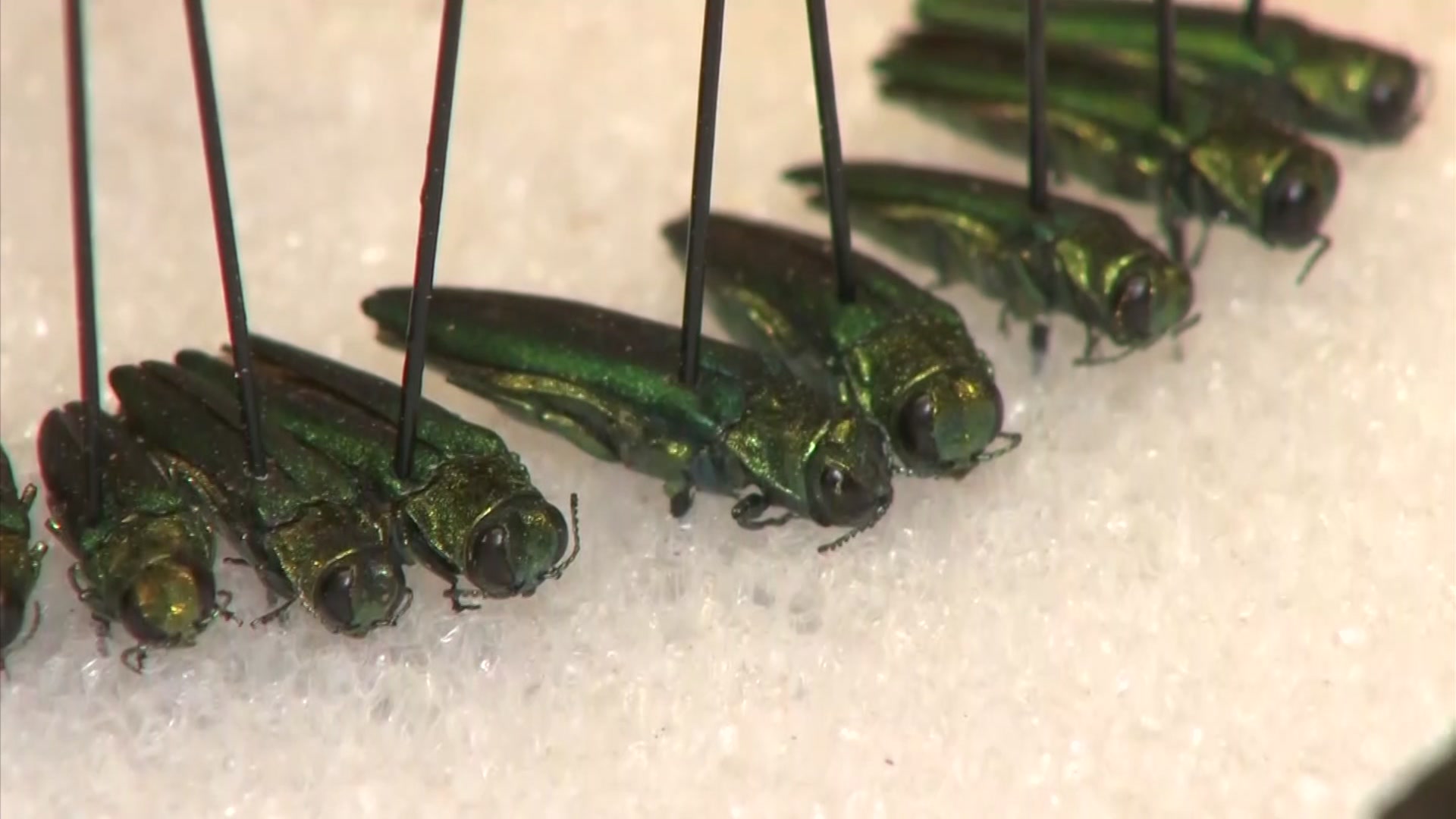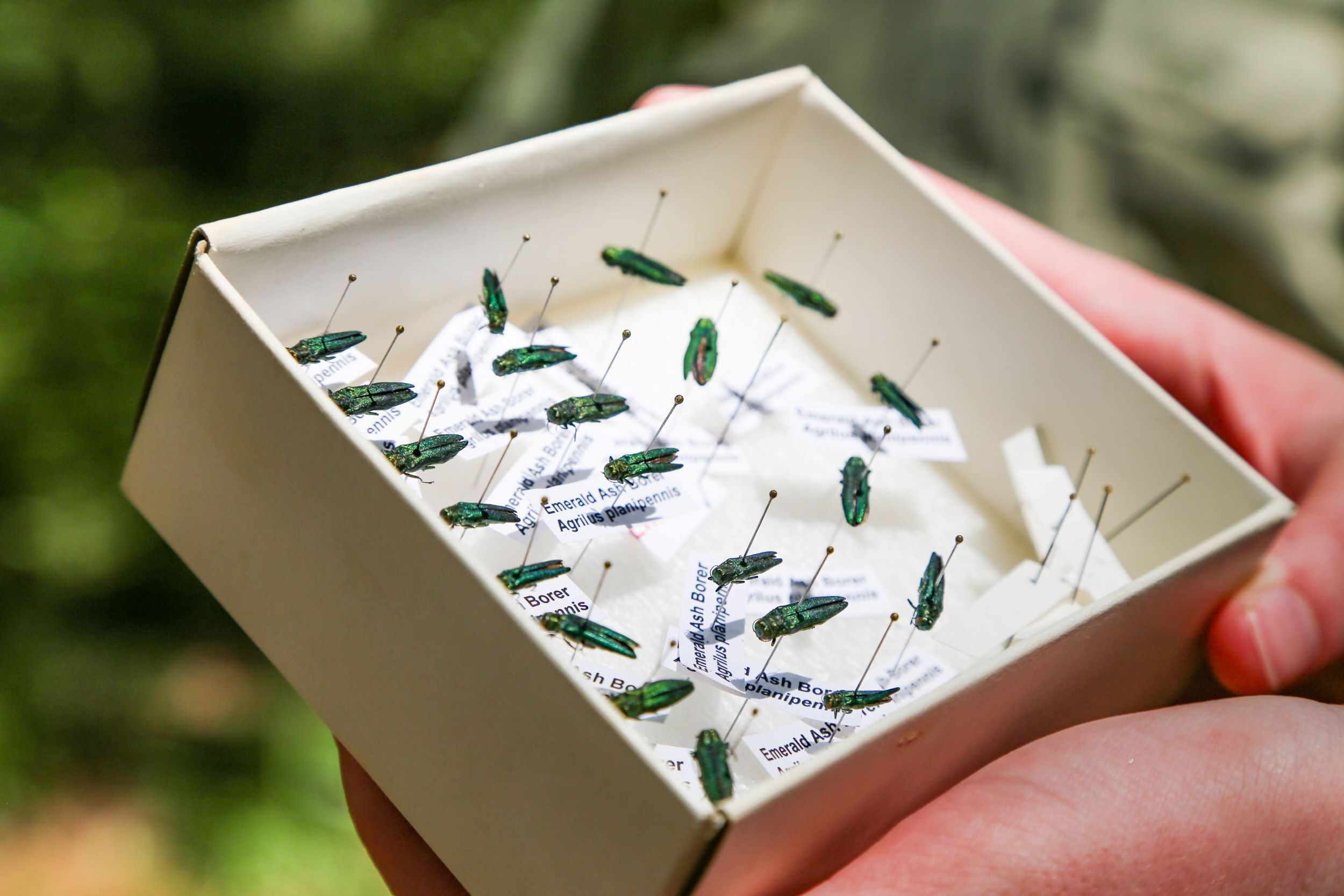The Fort Worth Botanic Garden is thanking a group of tree specialists for donating their services to protect ash trees in the sprawling garden from the invasive emerald ash borer beetle.
The non-native small green beetle devastates ash tree populations, boring its way into the bark to lay eggs. The beetle's larvae eventually feed on the tree's water-conducting tissue, slowly killing the tree.
The garden told NBC 5 Tuesday that the beetle's presence had been confirmed and that the insect threatened 24 ash trees.
Bartlett Tree Experts, a 114-year-old international tree care company, injected the trees on Tuesday with a solution from Rainbow Ecosciences that should eliminate the current insects and protect them from future infestations.
Get top local stories in DFW delivered to you every morning. Sign up for NBC DFW's News Headlines newsletter.

"We are excited to lend our expertise to help preserve these beautiful ash trees at the Fort Worth Botanic Garden," said Clinton Pearson, regional lab extension specialist at Bartlett Tree Research Laboratory. "Our team is dedicated to providing effective solutions to combat the emerald ash borer and ensure the Garden remains a thriving sanctuary for visitors and the community."
The 90-year-old botanic garden is one of the oldest and largest in the state and features 23 specialty gardens spanning 120 acres.
"The support we are receiving from Bartlett and Rainbow Ecoscience is invaluable. Their dedication to preserving our trees helps us maintain the beauty and health of the Garden for all visitors to enjoy," said Seth Hamby, director of living collections at the Fort Worth Botanic Garden.
WHAT IS AN EMERALD ASH BORER?
The emerald ash borer is a small beetle, green in color and smaller than a penny.
The beetle bores its way into the tree's bark and lays eggs. Larvae feed on water-conducting tissue, eventually killing the tree.
Officials said the insect has been confirmed in more than half of the United States and has killed millions of ash trees.
"Both healthy and unhealthy ash trees are susceptible to an EAB attack and may die within two or three years after becoming infested," said Allen Smith, Texas A&M Forest Service regional forest health coordinator, during an interview with NBC 5 in May 2022. "Ash trees have no natural resistance to the exotic insect. Without proper proactive measures, mortality can be 100% in heavily infested areas, so early detection could improve our chances to manage the pest."
Ash trees with low numbers of EAB often have few or no external symptoms of infestations. However, residents can look for signs of EAB among their ash trees, including dead branches near the top of the tree, leafy shoots sprouting from the trunk, bark splits exposing s-shaped larval galleries, extensive woodpecker activities, and D-shaped exit holes.
The beetle was first discovered in North America in 2002 in Michigan. It has since spread to at least 36 states, killing millions of ash trees.
To report emerald ash borer, please call the EAB Hotline at 1-866-322-4512.





